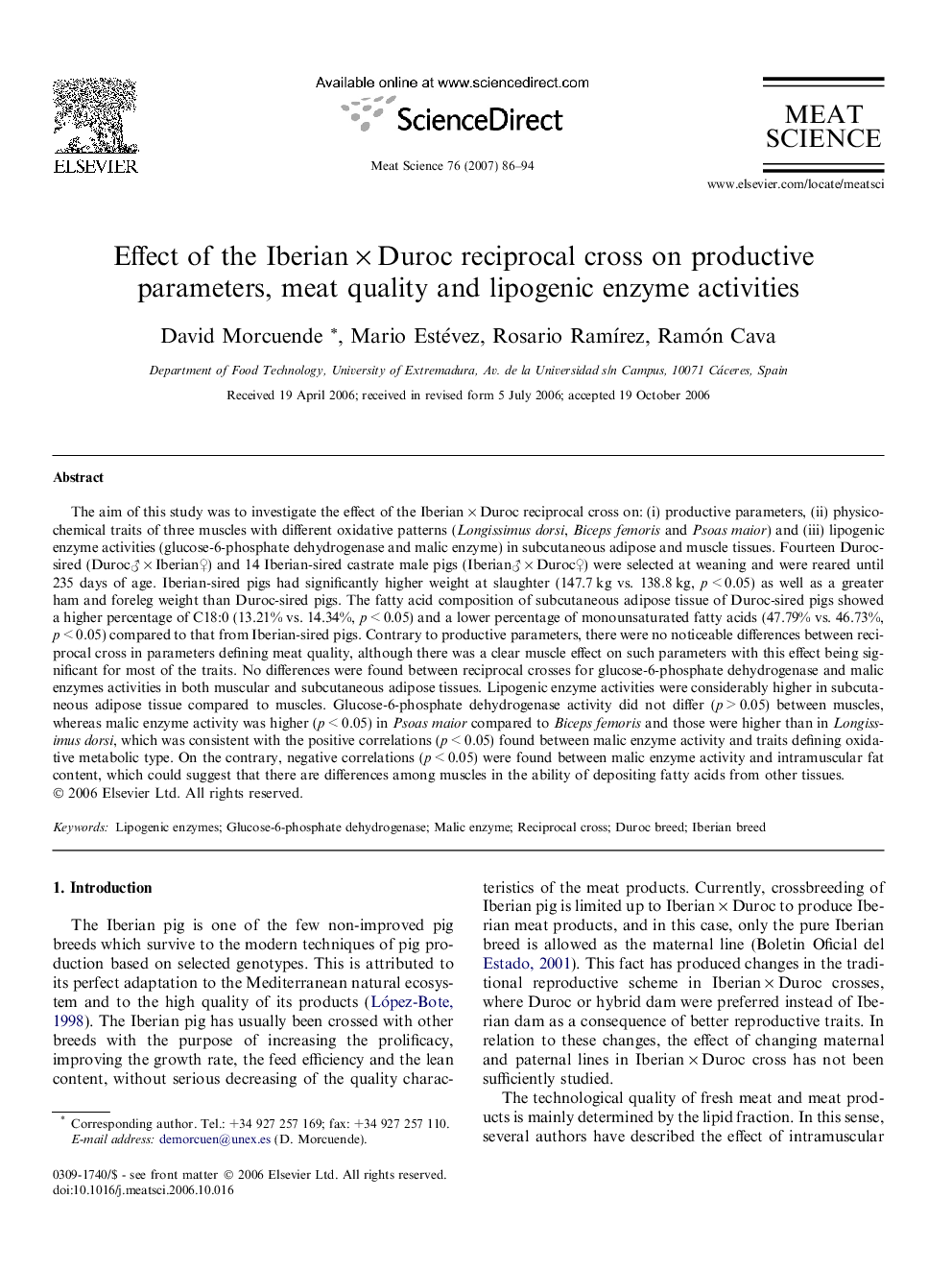| کد مقاله | کد نشریه | سال انتشار | مقاله انگلیسی | نسخه تمام متن |
|---|---|---|---|---|
| 2452102 | 1109706 | 2007 | 9 صفحه PDF | دانلود رایگان |

The aim of this study was to investigate the effect of the Iberian × Duroc reciprocal cross on: (i) productive parameters, (ii) physico-chemical traits of three muscles with different oxidative patterns (Longissimus dorsi, Biceps femoris and Psoas maior) and (iii) lipogenic enzyme activities (glucose-6-phosphate dehydrogenase and malic enzyme) in subcutaneous adipose and muscle tissues. Fourteen Duroc-sired (Duroc♂ × Iberian♀) and 14 Iberian-sired castrate male pigs (Iberian♂ × Duroc♀) were selected at weaning and were reared until 235 days of age. Iberian-sired pigs had significantly higher weight at slaughter (147.7 kg vs. 138.8 kg, p < 0.05) as well as a greater ham and foreleg weight than Duroc-sired pigs. The fatty acid composition of subcutaneous adipose tissue of Duroc-sired pigs showed a higher percentage of C18:0 (13.21% vs. 14.34%, p < 0.05) and a lower percentage of monounsaturated fatty acids (47.79% vs. 46.73%, p < 0.05) compared to that from Iberian-sired pigs. Contrary to productive parameters, there were no noticeable differences between reciprocal cross in parameters defining meat quality, although there was a clear muscle effect on such parameters with this effect being significant for most of the traits. No differences were found between reciprocal crosses for glucose-6-phosphate dehydrogenase and malic enzymes activities in both muscular and subcutaneous adipose tissues. Lipogenic enzyme activities were considerably higher in subcutaneous adipose tissue compared to muscles. Glucose-6-phosphate dehydrogenase activity did not differ (p > 0.05) between muscles, whereas malic enzyme activity was higher (p < 0.05) in Psoas maior compared to Biceps femoris and those were higher than in Longissimus dorsi, which was consistent with the positive correlations (p < 0.05) found between malic enzyme activity and traits defining oxidative metabolic type. On the contrary, negative correlations (p < 0.05) were found between malic enzyme activity and intramuscular fat content, which could suggest that there are differences among muscles in the ability of depositing fatty acids from other tissues.
Journal: Meat Science - Volume 76, Issue 1, May 2007, Pages 86–94